Welcome back to my series on the history of Libertyville’s next-door neighbor: Mundelein! When we left it in early 1909, Mundelein, at the time known as Rockefeller and already on its third name, was home to two railroad lines, a rapidly growing downtown, and with a vote of 55-22 had, along with Diamond Lake, become the most recent village to incorporate. These changes were nothing as compared to what was to come however, so let’s pick up where we left off and see just how much a school and a seminary would shape the future of the little town of Rockefeller!
The year of 1909 was a busy year for the citizens of Rockefeller: three months after the vote to incorporate, residents once again gathered at the ballot box, this time to participate in the village’s first municipal election. This first election saw long-time resident Sylvester L. Tripp elected village president, along with the village’s first board of trustees, with Paul Ray and Tom Russell included among its members. At the time, local politics were such a recent development that the newly elected Trustees held their first meetings in a hall that was rented for 50 ¢ per meeting. This was a temporary state of affairs however, as the board quickly put out bids for the construction of a proper village hall. The winning bid went to E. McDonald, who agreed to build the village hall for $ 643, the equivalent of $ 16,430.91 today. However, no sooner had work on the village hall begun when the town was once again considering changing its name in the hopes of gaining the favor of the town’s newest patron, Arthur F. Sheldon.

Born in 1868, Arthur Frederick Sheldon was a former teacher and book salesman, as well as the founder of the Sheldon Correspondence School, which taught its students the art of salesmanship. Started in 1902 and originally operating out of a rented room on the corner of West Monroe & South State Street in Chicago, within two years the school boasted some 10,000 students from as far away as Mexico and Germany as well as, unusually for the time, a number of women. With his classes quickly outgrowing his single room school, and having nurtured a dream of a university large enough to house his students and staff for some time, Sheldon began to look for land where he could make his dream a reality.
Arriving in Rockefeller in July of 1909, Sheldon wasted no time in purchasing what had once been the Norton homestead along with land previously belonging to John Holcomb on which to build his school. With the promise of employing some 195 local residents at the university, along with Sheldon’s remarkable gift for salesmanship, his suggestion to the board of Trustees that they rename the town after his school’s motto, Ability, Reliability, Energy and Action or more simply, Area, was quickly adopted. So on July 12, 1909 the Board of trustees officially changing the town’s name for a fourth time, this time to Area.
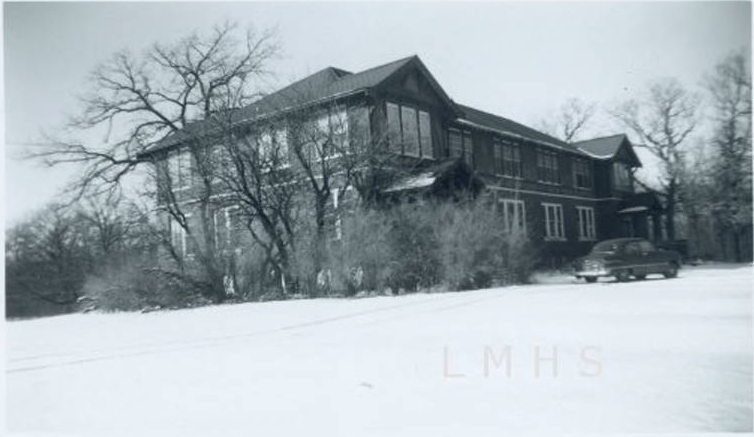
Unfortunately, the Sheldon School was to be short lived. With the outbreak of the First World War, the number of students and demand for well-trained salesmen plummeted. This, in addition to the mounting cost of maintaining the school eventually led to its closure in 1915. Due to a lack of records, one can only speculate on the reaction of the residents of the town formerly known as Rockefeller to this turn of events, but what we can say for certain is that in the 1917 election, Village President Thomas Watson was ousted by Robert F. Rouse who would go on to be the longest serving Mayor in Mundelein history. The land did not sit idle long however, and in 1919 was purchased by then Archbishop George Mundelein on behalf of the Archdiocese of Chicago. If that name sounds familiar, you can probably guess where this is headed.
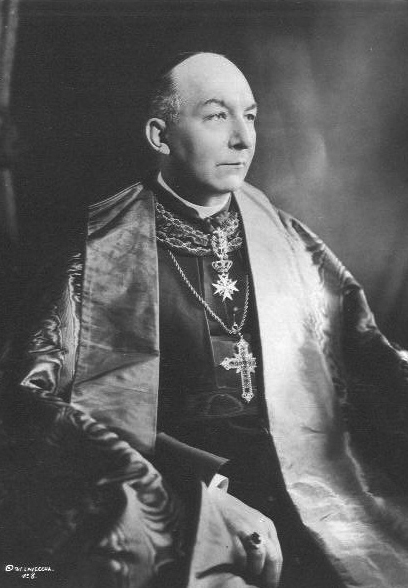
Born in 1872 in New York, Archbishop George Mundelein had long harbored hopes of building the first major Roman Catholic seminary in the Midwest, a place of solitude and self-sufficiency that would prepare men for the priesthood. With the purchase of the 600 acres that had previously been Sheldon School, he finally had the opportunity to realize that dream. Construction of the Saint Mary of the Lake Seminary, named after an earlier seminary that, like the Sheldon School, had closed in 1866 due to financial difficulties, began in 1921. Spending upwards of $10 million on the seminary, the equivalent of $134,834,078 today, the seminary blended open spaces, the wooded groves that the town had originally been named after, with a seminary in a neo-Georgian architecture. In addition to the usual classrooms and dorms, the seminary also boasts, perhaps uniquely, its own bowling alley!
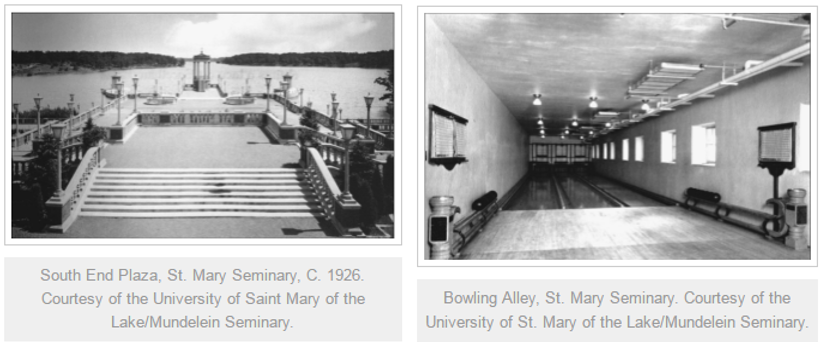
The construction of the seminary, more than any other event, put Area on the map, so it may not have been much of a surprise when, in December 1924, representatives of the SOO Line approached members of the Village board about changing the name of the town, again, to Mundelein. While it might not have been a surprise for the trustees, I have been unable to determine why the railroad approached them about the name change in the first place. Regardless, the request met with unanimous approval and was quickly made official, despite the fact that, as a local paper noted, most of the trustees were Lutheran. As a sign of his gratitude for the gesture, the following year the Archbishop presented the Mundelein Volunteer Fire Department, which had only been formed the previous year, with a 1925 Stoughton fire truck. Today known affectionately as Old Number One, the Stoughton can be seen annually in Mundelein’s 4th of July parade.
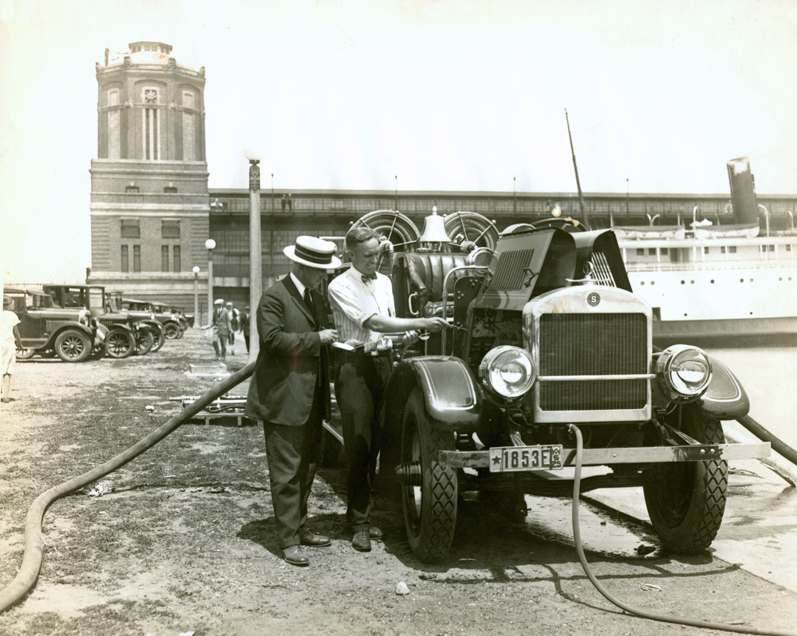
The seminary was still only partially completed when on June 23, 1926, as mentioned in a previous post, the world came to Mundelein to celebrate the 28th International Eucharistic Congress. The celebration, lasting from June 20-23, saw half a million people travel by trains, car, and in a few cases walking the 40 miles from Chicago to be in Mundelein for the dedication of the Seminary, the highlight of the Eucharistic Congress proceedings. Unfortunately for everyone involved, it was also the day of one of the worst rain and hail storms of the year. However, despite the downpour the procession continued and the next day, newspapers proclaimed the event an unequivocal success.
 During this time, another person of influence took an interest in Mundelein. By the mid-1920’s, Samuel Insull, inventor and business magnate, was a household name and one of the richest men in America, with a net worth estimated at $ 150 million or $1.88 billion today. Like the neighboring town of Libertyville, Insull saw newly re-christened Mundelein as an example of his ideal “commuter town” and adopted the town as his own. His contributions to Mundelein include the construction of miles of paved roads, water and power lines, a new North Shore Line depot for which then-Mayor Rouse was more than happy to bring up the first shovelful of dirt, as well as possibly his best known work, a Model Farm. Built in 1928 and located just off of Townline road, this model farm showed off the benefits of the latest gas and electrical appliances, available for purchase from Insull’s Public Service Company of Northern Illinois of course.
During this time, another person of influence took an interest in Mundelein. By the mid-1920’s, Samuel Insull, inventor and business magnate, was a household name and one of the richest men in America, with a net worth estimated at $ 150 million or $1.88 billion today. Like the neighboring town of Libertyville, Insull saw newly re-christened Mundelein as an example of his ideal “commuter town” and adopted the town as his own. His contributions to Mundelein include the construction of miles of paved roads, water and power lines, a new North Shore Line depot for which then-Mayor Rouse was more than happy to bring up the first shovelful of dirt, as well as possibly his best known work, a Model Farm. Built in 1928 and located just off of Townline road, this model farm showed off the benefits of the latest gas and electrical appliances, available for purchase from Insull’s Public Service Company of Northern Illinois of course.
With newly paved roads, sewer and power lines, yet another railroad line, and a very rich patron, the citizens of Mundelein must have been feeling pretty good about themselves. In 1928 the village passed a $36,000 referendum to build a new village hall, with the contract going to Leslie C. Ullrich, who would go on to build a number of Mundelein’s most enduring landmarks, including Saint Andrew’s Lutheran church, Washington School, and the Park District building. The new Alpine-style town hall, located on East Hawley Street, housed not only the mayor’s offices but also the fire and police departments (including a garage for Old Number One). Completed the following year, the town’s benefactor himself Samuel Insull, who may or may not have had a hand in the decision for the village hall’s location, was on hand to provide the dedication speech at the grand opening on July 2, 1929. One can imagine that to those gathered there, it must have seemed like the good times would go on forever.
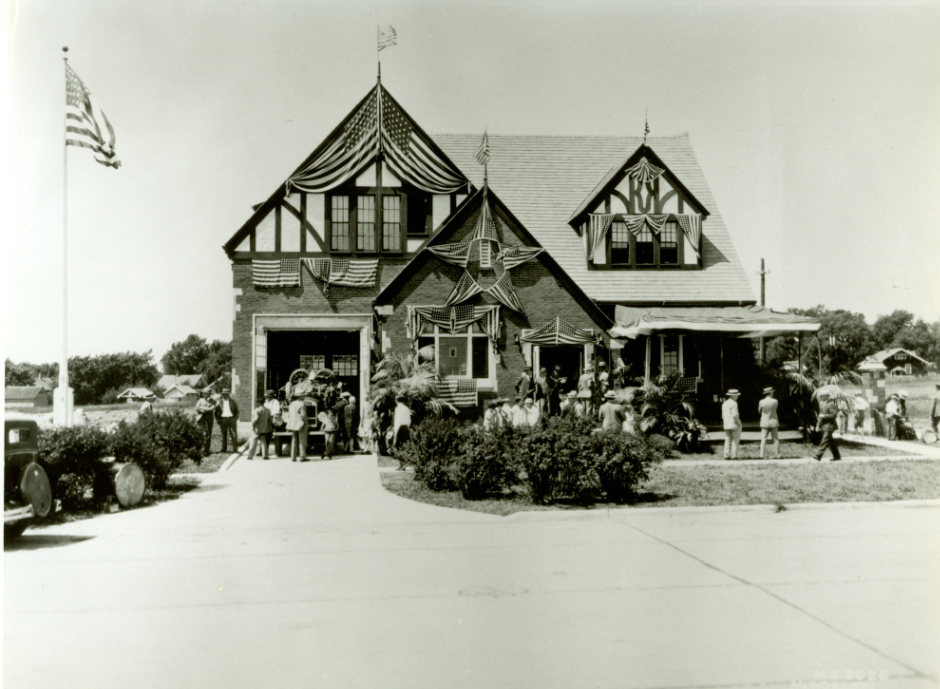
Unfortunately they did not, as within three short months the stock market crash of Black Tuesday would bring the whole edifice of progress and prosperity tumbling down. Join us next time as we see how Mundelein weathers fires, floods, droughts, bank robberies, the Great Depression, and to top it all off, a Second World War!
Carlson, Norman, and Mitch Markovitz. A transportation miracle : XXVIII International Eucharistic Congress Chicago, June 20-24, 1926. Vol. 7. Dispatch / Short Line Interurban Historical Society. Lake Forest, Illinois : Shore Line Interurban Historical Society, 2016.
History of Mundelein 1829-1939. MS, Library History Collection, Cook Memorial Public Library District, p. 2-4.
Kahover, Gail . Mundelein Seminary. Campus History. Charleston, CA: Arcadia Publishing, 2014, p. 45.
Killackey, Shawn P. Mundelein. Images of America. Chicago, IL: Arcadia Publishing, 2009.
Purcell, Connie, and Ricki Mandell. Memories of Mundelein. Fox Lake, IL: Mandell and Associates, 1984.
Photographs courtesy of the Village of Mundelein, the Libertyville-Mundelein Historical Society, the Cook Memorial Public Library District, and the University of Saint Mary of the Lake/Mundelein Seminary.
Public Service Company of Northern Illinois. The model farm : Lake County, near Mundelein, Illinois. Chicago, IL: Public Service Company of Northern Illinois, 1928.
Tadajewski, Mark. “Correspondence sales education in the early twentieth century: The case of The Sheldon School (1902–39).” Business History, November 28, 2011. Accessed March 14, 2017. http://www.tandfonline.com/doi/abs/10.1080/00076791.2011.590935.
“Town Drops John D’s Name.” Chicago Daily Tribune, July 16, 1909.
“Vast Throng Attends End of Congress,” Lake County Register, June 26, 1926, p. 1.
Vickers, Raymond B. Panic in the Loop: Chicago’s Banking Crisis of 1932. Lexington Books, 2011.
.
Categories: Local History
Tags: Local History
